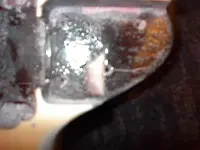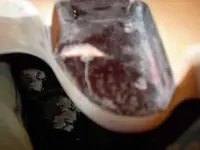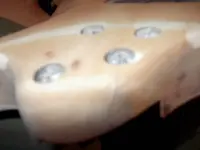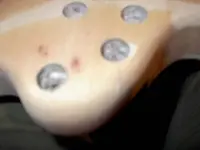punkin
Univalve & Avatar Speaks
Hey Chance...got a sec?
I picked up a cheapie Ibanez RG320 guitar a couple weeks ago for $15.00 . The body and neck looked really good but I just couldn't stand the color so, I stripped it down to bare wood. While doing so, I noticed a hairline crack that starts at the outside of the neck pocket and runs well into the pocket upto one of the screw holes. (I'll try to post some pics a little later).
Is there anything a DIY'r can do to salvage this? I was thinking of a screw plate like some of my fenders have to help stabilize it or maybe even drill out a portion of the crack and inject some epoxy. My expectations are realistic and realize this never was and never will be a high-end axe. I just thought it would be fun to mod another RG. I'm calling it "Radius-G". I rounded over all the edges with a 1/2 round over bit using the trusty old router and have put several hours of elbow grease into it. I'd like to finish it but if it's done for, so be it.
Hey Light! If you're out there...sure would appreciate some advice.
I picked up a cheapie Ibanez RG320 guitar a couple weeks ago for $15.00 . The body and neck looked really good but I just couldn't stand the color so, I stripped it down to bare wood. While doing so, I noticed a hairline crack that starts at the outside of the neck pocket and runs well into the pocket upto one of the screw holes. (I'll try to post some pics a little later).
Is there anything a DIY'r can do to salvage this? I was thinking of a screw plate like some of my fenders have to help stabilize it or maybe even drill out a portion of the crack and inject some epoxy. My expectations are realistic and realize this never was and never will be a high-end axe. I just thought it would be fun to mod another RG. I'm calling it "Radius-G". I rounded over all the edges with a 1/2 round over bit using the trusty old router and have put several hours of elbow grease into it. I'd like to finish it but if it's done for, so be it.
Hey Light! If you're out there...sure would appreciate some advice.
Last edited:








